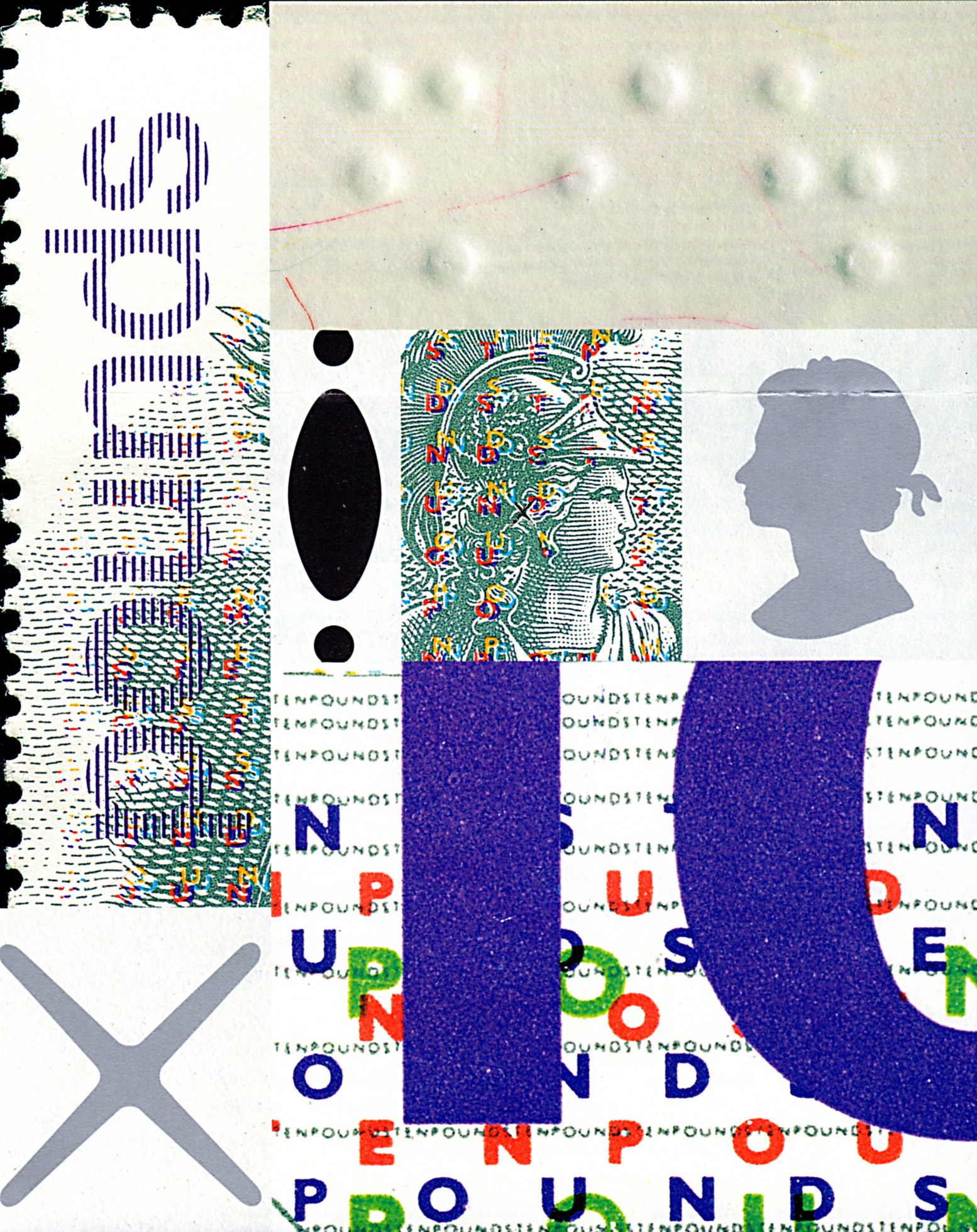Postal Updates
Post office poster advertises Britain's highest denomination stamp
From 1967 to 2006, Royal Mail (Great Britain’s post office) advertised all new issues with posters displayed in post offices. Most of these posters had pictures of the stamps along with basic information such as the date of issue, instructions for first-day covers, etc. Some were a little more elaborate.
My favorite poster is the one for Britain’s highest denomination stamp, the £10 Britannia issued on March 2, 1993. Because of the stamp’s high value, Royal Mail incorporated a number of security features to discourage counterfeiting. I like the poster because enlargements of the security elements are shown beneath the image of the stamp.
That portion of the poster is enlarged in the accompanying image. At the upper left is a close-up of the word “pounds,” part of the text “ten pounds” printed vertically up the left side of the stamp using short purple vertical lines. The multiple colors used to create the design are visible.
At upper right is the braille embossing of the word “ten” shown from the back of the stamp. Also shown in that section are the red fibers embedded in the paper.
Below the braille are three images. At left is one of the elliptical perforations. The stamp has four of them, two on each horizontal edge. In the center is an enlargement of the head of Britannia, showing the words “TEN POUNDS” that are overprinted in four different, overlapping colors: red, purple, light blue and yellow. At right is the identifying cameo of Queen Elizabeth II embossed with metallic silver ink.
At bottom right is an enlargement of the lower right portion of the stamp that shows part of the big “£10” in purple, the words “TEN POUNDS” overprinted in two type sizes and three different colors: red, purple and green, and the microprinting of repeating “TENPOUNDS” in gray.
Finally, at lower left is one of the 25 crosses embossed in a five-by-five array using metallic silver ink.
The story of this stamp is interesting. Royal Mail claimed that the £10 stamp was needed because “increasing postal rates for parcels made space on them at a premium,” although this stamp was the same size as two current £5 stamps.
The poster promotes the stamp as “A beautiful gift you’ll want to keep,” an odd sentiment since gifts are generally for giving, not keeping.
This stamp was undoubtedly very expensive to produce, and it was quietly withdrawn a couple of years after it was issued.
MORE RELATED ARTICLES
Headlines
-
US Stamps
Oct 7, 2024, 3 PMMcMurtrie dismissed as APS education director following Sept. 21 arrest
-
US Stamps
Oct 7, 2024, 12 PMVasiliauskas named president of Mystic Stamp Co.
-
US Stamps
Oct 6, 2024, 5 PMApgar souvenir card available
-
US Stamps
Oct 6, 2024, 4 PMFirst Continental Congress and U.N. stamps receive Scott catalog numbers








